|
||||
|
- Commercial |
||||
| COMMERCIAL | ||||
 |
National Petroleum Reserve has a BirthdayIn 1976, the administration of the National Petroleum Reserve in Alaska (NPR-A) was transferred to the Bureau of Land Management by authority of President Gerald Ford. The NPR-A, a vast 22.8 million acres on Alaska’s North Slope, was initially identified for emergency oil supply for the U.S. Navy by President Harding in 1923 and named the Naval Petroleum Reserve in Alaska. It is nearly the size of Indiana and is the largest single block of federally managed land in the United States. (My Public Lands Tumblr) |
|||
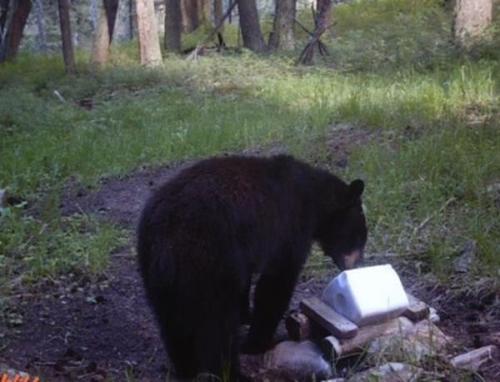 |
Timber Sale Reaping BenefitsFollowing a recently completed BLM timber sale in southwestern Montana, the Dillon Field Office received an unexpected phone call. A landowner, whose property lies in the Tobacco Root Mountains directly adjacent to the land, wanted to offer his comments on the sale. The conversation included positive comments towards the BLM for actively managing the forest, for reducing fuels on public land near homes, and for enhancing wildlife habitat. (My Public Lands Tumblr) |
|||
 |
BLM Extends Deadline for Nominations for 2017 Reclamation and Sustainable Mineral Development AwardsThe Bureau of Land Management has extended to June 12, 2017, the deadline for submitting nominations for the 2017 Reclamation and Sustainable Mineral Development Awards. The prior deadline was April 28. These non-monetary awards recognize those programs created to foster sustainable development, which encourages environmental health, social responsibility, and economic security. (BLM News Release) |
|||
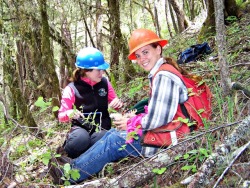 |
Get to Know BLM's #WomeninSTEMMacrina “Mac” Lesniak is a Sale Plans Forester for the BLM’s Roseburg District Office in Oregon. Mac selects forested stands that are ready for timber harvest in over 200,000 acres of the South River Resource Area. Western Oregon BLM almost exclusively contains highly productive forests managed under the Oregon and California (O&C) Lands Act to sustainably harvest and provide revenue to the counties where the BLM-managed lands are located. The thorough planning process for each timber sale takes five years before the BLM can offer it for sale so that Mac and an interdisciplinary team of specialists ensure that the timber sales don’t damage natural resources. (My Public Lands Tumblr)Related: Women in STEM campaign (My Public Lands Tumblr) |
|||
| RECREATION | ||||
 |
Take a Tour with 360-degree VideosThere is a new way to experience the natural wonders of the Pacific Northwest: 360-degree video! Float the Yakima River in central Washington and then check out more on full playlist of 360 videos. (BLM Oregon YouTube) |
|||
 |
Sea Otter Classic, One of the Most Popular Tourist Destinations in the World
Great weekend at the 27th edition of the Subaru Sea Otter Classic powered by SRAM MTB. The Sea Otter Classic is one of the most popular tourist destinations in the world. Known as a sprawling and energetic
“celebration of cycling,” Sea Otter is cycling’s North American season opener. Professional and amateur athletes alike make the annual pilgrimage to Sea Otter to participate in some of the sport’s most competitive and enduring events. Hundreds of pro cyclists, including
national, world and Olympic champions, attend Sea Otter to race and meet with fans. (BLM California Facebook) |
|||
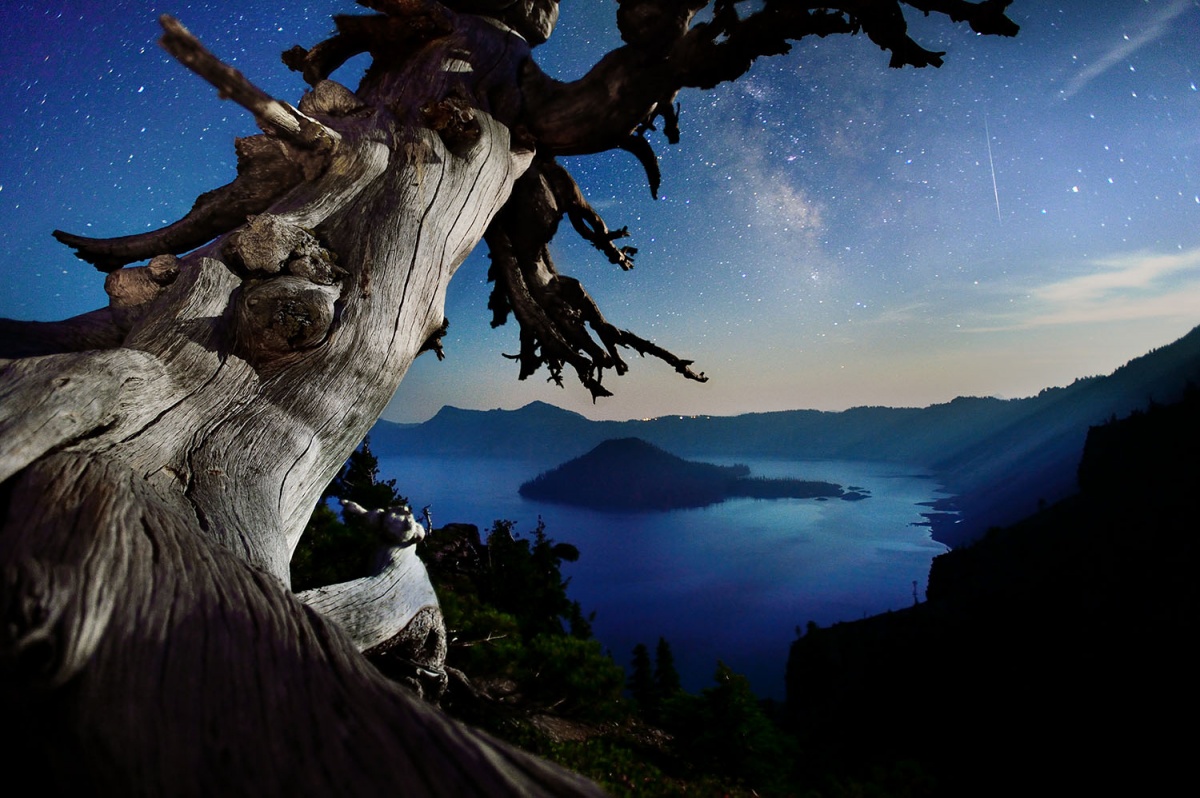 |
Take a Hike: 13 Remarkable Trees to See on Public LandsThe tradition of Arbor Day began in Nebraska in 1872. Raising awareness of the importance of trees, people continue to use the day to plant saplings and improve the health of forests. Trees help clean the air, provide habitat for wildlife, help conserve soil and water, and are the source of an entire industry that support jobs and the economy. Forest management isn’t as easy as watching the trees grow. Land management agencies like the Bureau of Land Management, the National Park Service, the U.S. Fish and Wildlife Service, and the U.S. Forest Service oversee hundreds of millions of acres of forests across the country. An adaptive and evolving approach is necessary to keep the nation’s forests healthy and productive. (Department of Interior blog) |
|||
| CONSERVATION | ||||
 |
Restoring the Pahsimeroi River
Decades ago, ranchers who lived along the banks of Idaho’s Pahsimeroi |
|||
 |
Fairy Shrimp at the Black Rock Desert Playa in NevadaThe Black Rock Desert playa has come back to life with the high amounts of precipitation Nevada has encountered. Aquatic species that lie dormant on the playa, hatch when water levels make for the right environment. “Fairy shrimp” are one such species. There are other species and varieties that are common to desert playas in Nevada. (My Public Lands Tumblr) |
|||
 |
Bringing Back Tex CreekA few miles east of Idaho Falls lies a dramatic landscape of gently rolling benches and exposed steep ravines. Past volcanic activity created an area so rich in food and shelter that it has its own designation - The Tex Creek Wildlife Management Area. Tex Creek provides essential connectivity for wildlife moving from harsh high elevation forests to lower elevation sage and grasslands. In fact, Idaho Fish and Game estimates Tex Creek provides vital winter range for upwards of 7,000 elk and mule deer on any given year. Unfortunately, Tex Creek’s habitat status changed rapidly in August of 2016. (My Public Lands Tumblr) |
|||
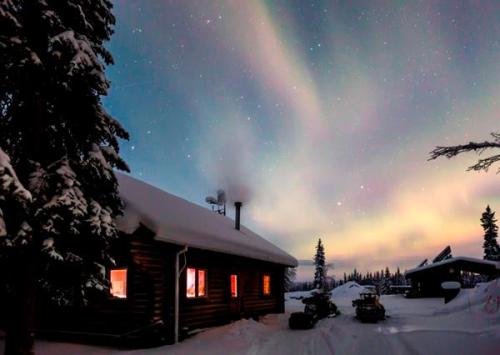 |
Winter Flow Measurements on Alaska's Fortymile Wild and Scenic RiverBLM monitors winter flows on Alaska's Fortymile Wild and Scenic River to better understand changes in the magnitude and timing of the natural flow regime. This information also helps quantify instream flow needs for fish, a requirement when filing for instream flow water reservations with the State of Alaska. (My Public Lands Tumblr) |
|||
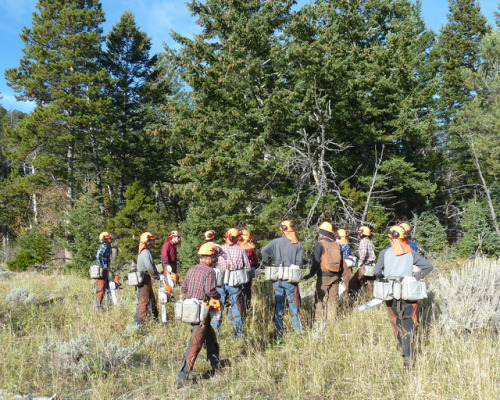 |
BLM Wyoming and Rocky Mountain Elk Foundation Improve HabitatThe Worland Field Office and the Rocky Mountain Elk Foundation have completed their 26th cooperative project to benefit wildlife in the foothills of the Absaroka Range in northwest Wyoming. The projects, which began in 1988, utilize prescribed burns and mechanical thinning with chainsaws to remove encroaching conifers from upland sagebrush, aspen and riparian communities. The resulting increase in grasses, forbs, aspen, willow and cottonwood provides more winter forage for elk and better browsing for moose, elk and mule deer. (My Public Lands Tumblr) |
|||
| HEADLINES AND HIGHLIGHTS | ||||
 |
General Land Office Celebrates 205 YearsThe Bureau of Land Management was officially established in 1946, but it has roots dating back two hundred years, since the foundation of the General Land Office (GLO) on April 25, 1812. The “Gateway to Land Ownership” as it was colloquially dubbed, helped millions of Americans in the 19th and 20th centuries acquire public lands for private and agricultural usage, while simultaneously generating income for the Federal Government. (My Public Lands Tumblr) |
|||
 |
National Predictive Services ProgramThe National Predictive Services Program is the lead program in providing decision support services to the wildland fire community. In general, Predictive Services consists of assimilating intelligence operations, fire behavior and fire weather programs to produce national and area-wide fire weather/ fire danger/ fire behavior outlook products. The National Interagency Fire Center along with federal and state agencies and the public benefit from these resources. (BLM California Facebook) |
|||
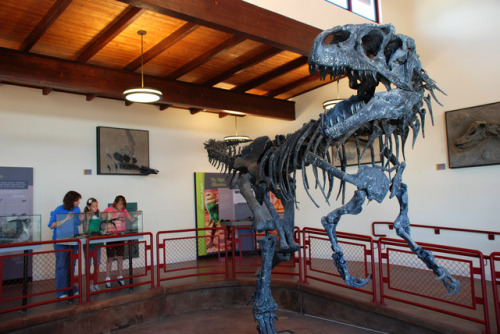 |
BLM Utah, South Dakota School of Mines and Technology, and Dinosaur FossilsForty years ago, the Bureau of Land Management in Utah constructed two temporary buildings to protect Jurassic fossil beds at the Cleveland-Lloyd Dinosaur Quarry near Price, Utah. Since then, weathering and natural geological processes have made noticeable inroads on the conditions inside the buildings impacting the exposed fossils on view to visitors. The in situ bones are a valuable resource for research, education and public viewing, and BLM paleontologists sought advice from Sally Shelton. Shelton is a museum conservation expert at the Museum of Geology, South Dakota School of Mines and Technology (SDSMT), and also teaches a Paleontological Resources course at SDSMT. (My Public Lands Tumblr) |
|||
 |
Toolik Field Station: Public Lands Support Science in the NorthBLM-managed public lands host our nation’s premier Arctic research station. The Toolik Field Station is located on Alaska’s North Slope on lands managed by the Central Yukon Field Office in Fairbanks. From its humble 1970s beginnings as a rustic, no-frills seasonal field camp, the Toolik Field Station has grown into a world-class Arctic research facility that annually supports an average of 80 research projects/field courses with 450-500 participants working in more than 20,500 different research plots. (My Public Lands Tumblr) |
|||
 |
Collaborative Partnership Combats Illegal DumpingThe BLM Las Cruces District has taken a proactive approach to the problem of illegal dumping within the district, working in association with the Illegal Dumping Partnership (IDP) to address the problem. Founded in 2012, the IDP is a multi-agency task force dedicated to preventing illegal dumping activities within Dona Ana County, New Mexico. Its members include Dona Ana County, the South Central Solid Waste Authority, the Dona Ana County Sheriff’s Office, and the Mesilla Valley Regional Dispatch Authority. (My Public Lands Tumblr) |
|||
 |
BLM Restoration Projects Bring Economic Returns A recent report from the U.S. Geological Survey demonstrates both the environmental and fiscal benefits that result from spending on ecosystem restoration projects. By evaluating 21 Department of the Interior restoration projects (11 of which are BLM projects), the report indicates that for every $1 million invested in ecosystem restoration, between $2.2 and $3.4 million flow through to local, regional, and national economies. This result means that there was a two- to three-fold return in economic activity for every dollar spent. The BLM-specific projects included sagebrush and sage-grouse habitat restoration, fuels reduction and post-fire restoration projects. (My Public Lands Tumblr) |
|||
| WILDLIFE QUESTION OF THE WEEK | ||||
 |
Fill in the Blank |
|||
| DOI HIGHLIGHTS | ||||
 |
President Signs Antiquities Act Executive OrderPresident Trump signs the Antiquities Act Executive Order, directing Secretary Zinke to review national monuments created by the Antiquities Act since 1996. (Department of Interior video) Related: "Finally, rural America has a voice again" (Department of Interior News Release) |
|||
 |
Secretary Zinke Announces Boost to Wetland, Waterfowl Conservation, Access to Public Lands Through Conservation Grants, Federal Duck Stamp FundsThe Migratory Bird Conservation Commission, chaired by U.S. Secretary of the Interior Ryan Zinke, today approved $17.8 million in grants for the U.S. Fish and Wildlife Service and its partners to conserve or restore more than 108,000 acres of wetland and associated upland habitats for waterfowl, shorebirds and other birds in 14 states throughout the United States. Representing Secretary Zinke at the meeting was Acting Deputy Secretary of the Interior James Cason. (Department of Interior News Release) |
|||
 |
Secretary Zinke Announces Funding of $60 Million for Cobell Education Scholarship FundU.S. Secretary of the Interior Ryan Zinke today announced the Department has made its final transfer to the Cobell Education Scholarship Fund, bringing the total amount to $60 million to be made available to help unlock the doors to advanced technical training and higher education for Native youth. (Department of Interior News Release) |
|||
 |
6 Ways Interior Is Advancing America’s Energy IndependenceThe Interior Department is known for protecting some of the most amazing landscapes across the U.S. An equally important part of Interior’s mission is supplying the energy necessary to power America. (Department of Interior News blog) |
|||
 |
Secretary Zinke Statement in Support of President Trump’s American Energy Executive OrderPresident Donald J. Trump, Secretary of the Interior Ryan Zinke, Administrator of the Environmental Protection Agency (EPA) Scott Pruitt, and Secretary of Energy Rick Perry announced a bold American energy Executive Order that will put our nation on track to full and dominant American energy independence. The Executive Order calls on the Secretary of the Interior to review the Bureau of Land Management’s 2016 moratorium on new coal leases on federal land and also review three final rules from the Department regarding oil and gas production on both federal and private land and the outer continental shelf. (Department of Interior News Release) Related: Secretary Zinke Takes Immediate Action to Advance American Energy Independence (Department of Interior News Release) |
|||
| WILDLIFE QUESTION OF THE WEEK ANSWER | ||||
| "A star-nosed mole is surely one of the world's weirdest-looking animals. If you were to come face to face with one, you might think its head had been replaced by a tiny octopus. And for an animal that’s nearly blind, the American species is astonishingly speedy: The world’s fastest eater, it can find and gobble down an insect or worm in a quarter of a second." Read more from National Geographic, Inside the Bizarre Life of the Star-Nosed Mole, World's Fastest Eater | ||||
|
||||








